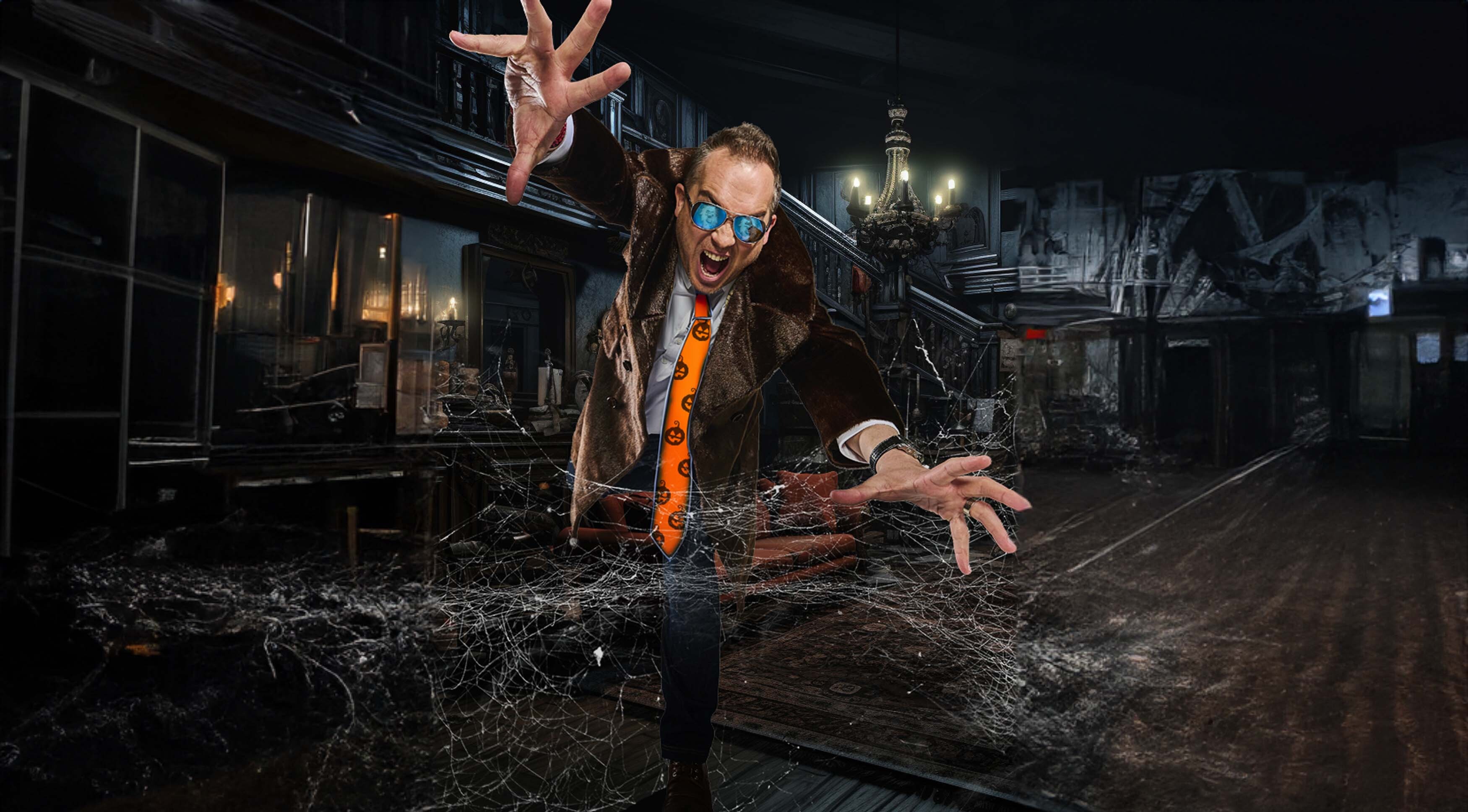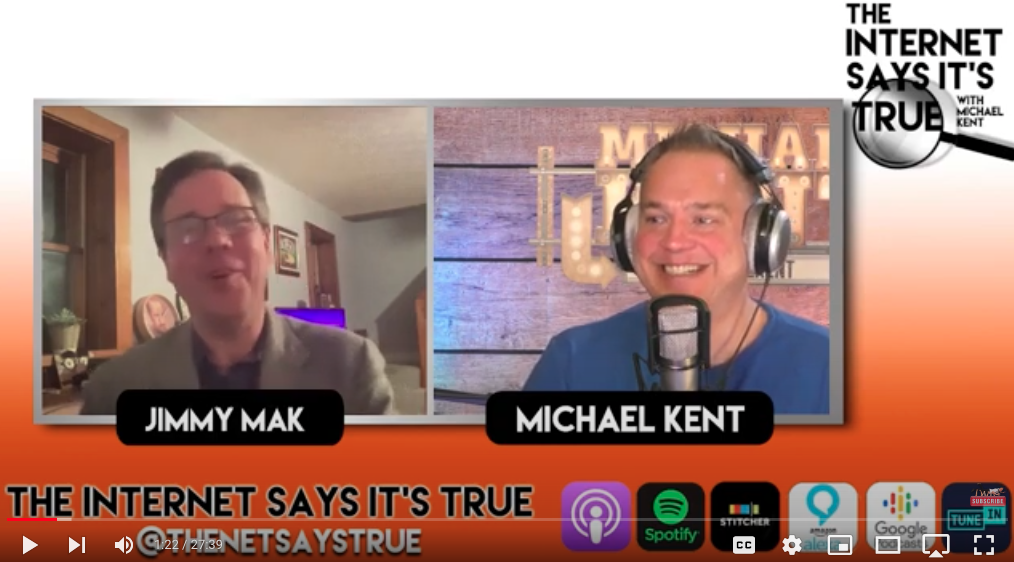A Halloween Digest – SUPER REWIND EPISODE
It’s Halloween! And for this spooky holiday, we’ve compiled 5 of our spookiest episodes! Enjoy hearing about:
– a man who should be famous for inventing a veterinary device, but instead became famous for murder
– a popular Mexican dish that has its origins in human sacrifice
– a strange way that Victorian English people used mummies
– what happened to the mummified remains of an unidentified man
– the strange story of how ancient Italians kept vampires from eating living souls
It’s a super-rewind digest episode! Enjoy listening and Happy Halloween!

There’s a legend about the Viking, Erik the Red. When he was exiled from Iceland, he ended up in Greenland, but at the time, it wasn’t called that. He was there with his ships, family and servants, but he wanted to entice other Norse settlers to come from Iceland. The legend goes that he named it Greenland, so it would be enticing to the settlers despite more than 80% of the island being covered in ice. It worked and thousands of new settlers came to Greenland on 25 ships. Only 11 of the ships actually made it and when the Norse settlers got there, they saw that there was no green land to farm. They got scammed, but somehow were able to establish a couple settlements anyway. It’s really one of the first recorded cases of real estate fraud in history.
Then there’s the story of the man named George C. Parker. He was a famous con man who would go around selling public landmarks to his victims. At different points in his life, he supposedly fraudulently sold Grant’s Tomb, the Statue of Liberty, the Metropolitan Museum of Art and Madison Square Garden. And famously sold the Brooklyn Bridge several times to multiple people. The folks thought they had bought control of the access to the bridge. At one point, someone even got arrested after trying to erect a toll booth on their newly purchased Brooklyn Bridge. And if you’re wondering, yes – that’s where we get the expression “if you believe that, I’ve got a bridge to sell you.”
You’ve heard of a Ponzi scheme. Well, the original Ponzi was a con man who devised all kinds of schemes to defraud people out of their money, but one of the most famous was in 1925 when he bought a bunch of Florida swampland outside of Jacksonville and sold lots to investors as “Prime Florida Land.” Investors bought the land and couldn’t do anything with it.
So obviously our story today deals with a case of fraud. And to be specific, a scheme to defraud people investing in a piece of property. The Newby-McMahon Building. It’s know better as “The World’s Littlest Skyscraper.”
When the building was completed, it was reportedly a complete embarrassment to the residents of Wichita Falls, Texas.
Witchita Falls, Texas is a small to midsize city with a population of about 104,000. It’s home to Sheppard Air Force Base, which is notable because it’s the largest Air Force training base.
The town was founded on the site of a large Choctaw settlement by cattle ranchers and people who were drawn to the waterfall on the Wichita River. It became a city built on different industries, including food processing and retailing, flour milling, railroads, cattle, banking, and oil. A petroleum reservoir had been discovered just North of the city in 1912, and a sort of boom happened with 20,000 new settlers moving in over the next 6 years. Between 1910 and 1920, the population went from 8,000 to 40,000. Some of them were becoming instant millionaires from the oil boom. In addition to new homes going up everywhere, there was a severe need for office space. There were reportedly people setting up tables and chairs on the sidewalk and doing business deals on street corners.
One of the offices in the downtown area was the Newby building, built by Augustus Newby decades earlier. It was across the street from the popular St. James hotel and nearby the city’s rail station. This is where we meet our con-man, J.D. McMahon.
J.D. McMahon was an oil man and promoter who had his own oil rig construction company. He recognized the town’s need for office buildings and saw it as an opportunity. So going into 1918, he started looking for investors for a brand new addition to the Newby building. It would be a skyscraper – which was incredibly special and rare for the time. The world’s tallest structure at the time was the Eiffel Tower at 984 feet. The tallest building at the time was the Woolworth Building in New York City, which was 792 feet. There were only 5 buildings in the world that were taller than 500 feet – all in the United States.
McMahon’s skyscraper would be 480 feet, making it the 6th tallest building in the world. That plot of land at the corner of 7th street and LaSalle in downtown Wichita Falls, would be a true wonder of the time and people would come from far and wide just to see it, let alone rent an office. Everyone was eager to invest. They needed the office space, they had the money, and soon McMahon had collected $200,000 dollars in investments as startup capital for the project. That’s the equivalent to something like $3.4 million dollars in today’s money. Investors were shown the plans for the high-rise building and signed off on them.
Then the construction began. McMahon used his own construction crews and equipment to build it. It’s a neoclassical style red brick and cast stone building that looked very similar to the original plans the investors saw – with one major difference. When it was completed, the skyscraper wasn’t 480 feet. It was 40 feet – just 4 floors. There were a few legal issues. Firstly, apparently McMahon hadn’t gotten permission from the owner of the lot to even build there. But the issue that everyone was talking about were all these investors who got conned. They had given money for a skyscraper, not a small office building. Or had they? The court case revealed the con that McMahon had run. Remember how I told you the investors signed off on the building plans before giving their money? McMahon was able to show the judge that the building plans listed the building not as 480 feet, but 480 inches.
The lawsuits from investors began immediately.
The investors lost the case, and their savings, save for a little bit of money they won back from the elevator company, who had refused to build one once they saw that it wouldn’t fit in the building. In fact, the tiny new building, known as the “Newby-McMahon Building,” didn’t have an elevator OR stairs. The only way to get to the upper 3 floors was with a ladder. When they installed staircases, they took up 25% of the building’s interior. The bottom floor had room for just 6 desks. One desk for each of the 6 companies that would be the building’s original tenants. But 4 of those companies moved out. Through the next decade, the building only had two tenants using it.
Locals were embarrassed by the tiny office building, but someone from out of town took note. Robert Ripley, who had made his name with his famous “Ripley’s Believe it or Not” publications wrote about the debacle and called the Newby-McMahon Building “The World’s Littlest Skyscraper.” The name stuck.
Soon after the building was erected, the Texas Oil Boom ended and people stopped moving to Wichita Falls. The population didn’t decrease, but it slowed dramatically, and there was much less need for all the office space. The Newby-McMahon building was boarded up and became vacant for years. It survived a fire, multiple tornados, and even survived part of it’s wall caving in. None of the tenants had a long stay in the run down tiny office building.
Today, the Newby-McMahon building still stands tall – 40 feet tall – in Wichita Falls. It’s changed hands multiple times and has been bought and sold for much less than the money that was raised to erect it. It’s been restored as recently as 2005 and it now houses a used furniture and decor store called Hello Again. The World’s Littlest Skyscraper is listed on the National Register of Historic Places and has been declared an official Texas Historic Landmark.
So what happened to J.D. McMahon? Well after he won his court case against the investors, he disappeared and was no where to be found. His con was a success and its legacy lives on in the form of a curious roadside oddity – The World’s Littlest Skyscraper. The Internet Says it’s True.

Review this podcast at https://podcasts.apple.com/us/podcast/the-internet-says-it-s-true/id1530853589
Bonus episodes and content available at http://Patreon.com/MichaelKent
For special discounts and links to our sponsors, visit http://theinternetsaysitstrue.com/deals

